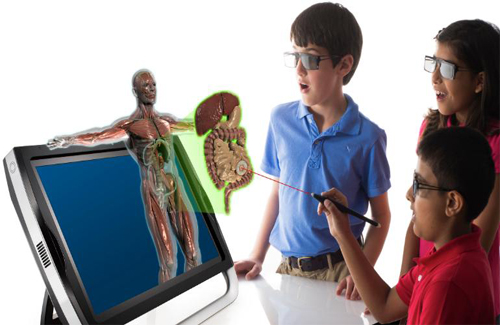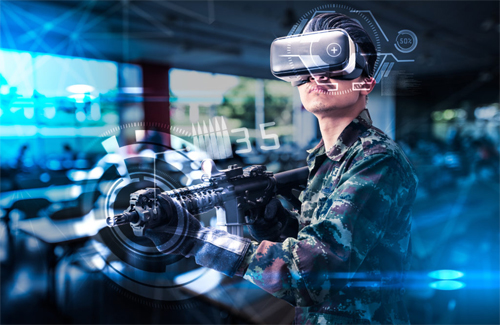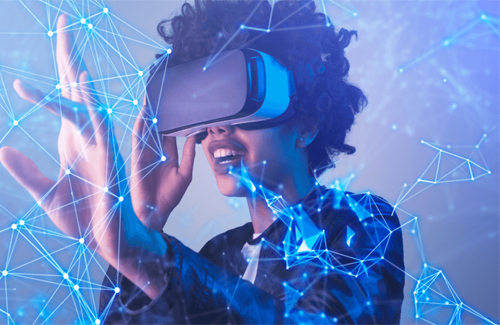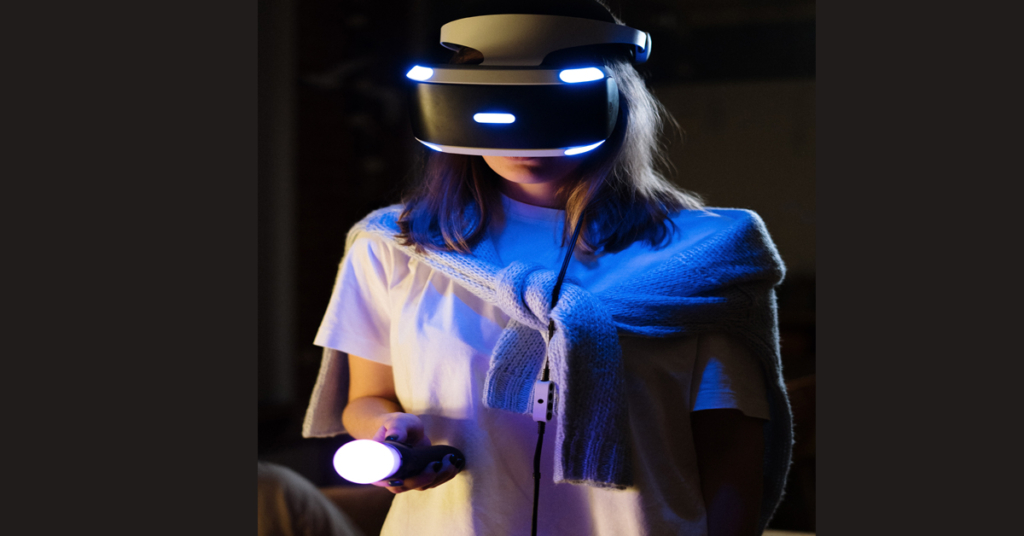Since time immemorial, the World has evolved through technologies; from igniting the fire to creating VFX of fire the human has achieved all. There is no limitation to innovation and hence the boundaries of needs or technological demand have surged in recent times. Virtual Reality is one such innovation that stimulates an experience completely different from the real world. In simple words, virtual reality is a computer-generated simulation. It enables a person to interact with an artificial three-dimensional visual or other sensory environment curates for a certain purpose.
The term ‘virtual reality’ was coined by Jaron Lanier in 1987 during a research period on such technology. VPL Research was the first company that pioneered research into virtual reality and 3D graphics. The first virtual reality gear like virtual reality glasses, data gloves and later, the full data suite was sold by this company.
How is this virtual reality represented?
Well, there are many devices for experiencing the same like headsets, omnidirectional treadmills, special gloves and many more. This can be applied in diverse fields, for say, entertainment, military training, sports, architecture, medicine and more.
It can be both exciting and tranquil to experience and understand this reality. No longer a game of keyboard and mouse, it works with more intense technological advances and forces people to adapt to technological creations. One can experience amazing 3D concepts like walk around a three-dimensional building or perform a virtual operation, play a multi-user game or take part in a theatre of war or interact with the artwork.
Sectors to benefit:
Now a day, virtual reality (VR) technology-based solutions touching various aspects of mankind. The biggest difference it is making to mankind is in providing better training. For example, in the field of medicine, VR is getting increasingly used to practice surgeries and other medical procedures.
This is helping not only students to gain valuable learning but also helping experienced surgeons plan their surgeries better thereby reducing any possible errors. This certainly will have a huge benefit to patients during their recovery after their surgery. VR is also used in the rehabilitation of patients after a stroke. They can avoid expensive gadgets and trainers through the use of VR headsets to regain their motor skills. Even in the field of mental health, VR is being used to provide therapy to patients, reducing the recovery time.

Not just in medicine, VR is also used in education and training across different fields such as training maintenance personal in the industry or interactive learning for engineering students. Sports training is another area where VR is being regularly used by coaches and players to improve their cognitive abilities. Another major area of applications is in the military. The military uses VR to simulate various battlefield scenario for its personal. One of the oldest areas of application of VR is in training pilots of aircraft through flight simulators.
The entertainment industry is also very rapidly adapting VR based techniques to provide a better experience to its audience. For example, the sports industry is using VR not only for training the athletes, but also to provide a highly enhanced experience to its audience. Streaming live games using VR is likely to be a reality shortly through which the audience can feel the experience of being in the gallery of a stadium and enjoy as if they are attending the live event.

Not just sports, technologies are getting developed to provide people virtual tours of exotic destinations, that they can not otherwise afford to travel and experience. Even some museums are providing VR headsets to visitors to learn more about the exhibits. Many other business organisations are using VR simulations to improve their performance. The retail industry is using VR to simulate customer experiences in a store to design better layout and placements of products.
Also Read: Lockdown effect on the children’s psychology
The new era brought in by COVID19 has severely limited business travel and office experiences. Hence, many organisations are experimenting with virtual reality meetings to make their employees feel more involved in the proceedings and feel better connectivity with the other people in the meeting. The journey of virtual reality, touching the life’s of ordinary people has just begun and has a long way to go. But the speed at which the developments are happening, VR is likely to touch people in many areas. It may be remote schooling, family functions or a doctor’s visit. It may not be long before a daily wager in rural India can experience a visit to The Alps of Switzerland at a highly affordable cost sitting at home.
Types of VR:
Virtual reality products are available in various ranges of complexity and affordability. One can buy a virtual reality headset for as low a price as 2000rs, attach their mobile phone to it and experience a basic form of virtual reality. On the other hand, highly sophisticated gadgets can cost millions of dollars.
Now let us look at what different types of virtual reality experiences one can have.

First of all, virtual reality technology enables immersive experience to its users to help them have a better feel of what they are watching and also interact with it. From the perspective of immersive experience, VR comes in three forms—fully immersive, semi-immersive and non-immersive. In a fully immersive VR, a user uses head-mounted displays headphones, gloves and other accessories to get a very rich interactive immersive experience. Complete with sight, sound and at times touch experience, this kind of VR provides a complete experience. One can find the use of this kind of technology in gaming and entertainment applications.
The semi-immersive as the name is obvious provides a partial virtual environment to the user. This is mainly used for educational and training purposes. For example, most flight simulators use this kind of technology. Even some modern driving schools are using this technology to provide initial training on driving a car before a student is allowed to drive on the road. Often this kind of technology requires additional physical systems along with virtual reality systems. Another form is Augmented Reality that gives a semi-immersive experience, where computer-generated images are overlayed on real-time images. This is getting extensively used in the industry to develop products or maintain their machinery.

The third type of VR is the non-immersive type and often is most commonly used by people. For example, most gaming software uses this kind of technology and is the most affordable of the VR technologies. While most of the commonly available VR technologies available, allow a person to virtually interact with an environment, it is also important to interact with other people in the same virtual environment.
Collaborative VR is emerging to fulfil these needs. Finally, mixed reality allows users to interact with both physical and virtual worlds at the same time. It is used in various fields, such as education or maintenance. One of the commonly used technologies of mixed reality is Microsoft HoloLens.
While virtual reality technologies started their journey in the 1960s, it is only recently VR technologies are seeing an explosion of technology and applications. With the increasing computing power, even in our mobile phones, VR technology is poised to develop further and touch our lives immersively.




